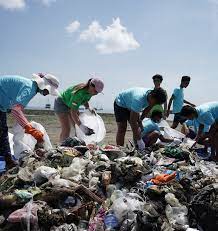Waste Management: Definition, Types, Methods, and Advantages
Waste Management Service
Tuffley is the
practice of handling undesirable waste things that have fulfilled their job but
are no longer relevant. The waste management process includes collecting,
processing, and dumping solid waste items. Human connection with the
environment has always resulted in waste production.
Wastes contain dead and rotting plant and animal remnants,
metabolic by-products (feces, excreta, and so on), abandoned materials from
homes, offices, enterprises, restaurants, industries, and hospitals, pesticides
and herbicides applied on fields, and many other things.
Domestic Wastes
Domestic waste refers to the waste products generated by our
households in our everyday routines.
Kitchen trash such as vegetables, fruits, and other food
waste
Sewage-human excreta and kitchen and bathroom waste
Garbage
Collection Tuffley, rags, hair, and house dust
Others-plastic bags, bottles, tins, and so on.
Domestic garbage is commonly referred to as refuse.
Approximately 90% to 90% of home garbage is thrown directly on land, producing
land or soil pollution.
Waste from Industry
All industries produce waste. Ashes, trash, construction
material wastes, pollutants, tin cans, plastic tubs, paints, oils, and other
complicated synthetic materials are typical wastes.
Mining activities generate waste in the form of tailings
(rocks with little or no value).
Metallurgical companies emit waste such as slag and scrap
metal.
Paper and pulp factories discharge effluent, including wood
chips, bark fragments, cellulose fibers, and various chemicals.
Waste from oil refineries and petrochemical plants contains
hydrocarbons, organic acids, and sulfur compounds.
Waste from Businesses
Commercial businesses such as restaurants, hotels,
marketplaces, offices, printing shops, auto repair shops, health organizations,
and hospitals generate significant waste.



Comments
Post a Comment